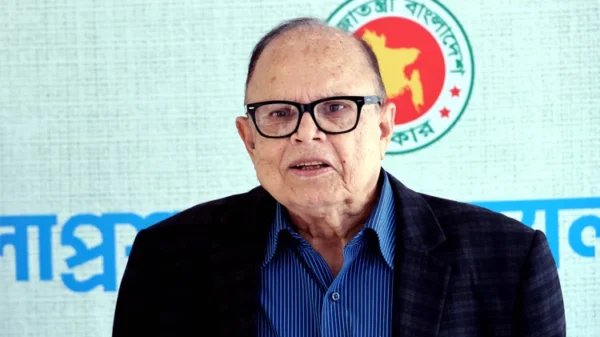The fire that killed 38 people at an immigration detention center in Mexico happened as Western hemi-sphere countries face pressure to address the extraordinary number of people fleeing their homes.
Mexico has expanded its network of dozens of detention centers while working closely with the United States to limit movement of asylum-seekers through its territory to the U.S. border, including to Ciudad Juarez, where authorities said migrants set mattresses on fire late Monday in a detention center after learning they would be deported.
Here are some questions and answers about the conditions and policies that led to one of Mexico’s dead-liest events at an immigration detention center.
WHY WERE THESE MIGRANTS DETAINED?
Specifics have yet to be released, but Mexico has emerged as the world’s third most popular destination for asylum-seekers, after the United States and Germany. It is still largely a transit country, though, for those on the way to the U.S.
Asylum-seekers must stay in the state where they apply in Mexico, resulting in large numbers being holed up without work in Tapachula, near the country’s southern border with Guatemala.
Tens of thousands are also assembled in border cities, including Ciudad Juarez, often arriving illegally after harrowing journeys or paying someone off. A sprawling network of lawyers, fixers and middlemen has sprung up to provide documents and counsel to migrants who can afford to speed up the system.
More than 2,200 people are believed to be at Ciudad Juarez migrant shelters, and more are living else-where in the city after arriving from Guatemala, Venezuela, Nicaragua, Colombia, Ecuador, Peru and El Salvador, according to a report issued last month by the Strauss Center for International Security and Law at the University of Texas at Austin.
Mexico carried out more than 106,000 deportations last year, with about 8 out of every 10 sent to Gua-temala or Honduras.
HOW ARE U.S. POLICIES AT WORK?
The Trump and Biden administrations have relied increasingly and heavily on Mexico to curb a flow of migrants that has made the United States the world’s most popular destination for asylum-seekers since 2017, according to U.N. figures.
Guatemalans were the largest group among those killed or injured in Monday’s blaze, according to Mexi-co’s Attorney General’s Office. Others were from Honduras, El Salvador, Venezuela, Colombia and Ecuador.
Guatemalans have been disproportionately affected by a U.S. policy in effect since March 2020 to return people who enter the U.S. illegally to Mexico. The practice suspended their rights to seek asylum on grounds of preventing COVID-19.
Mexico takes back Guatemalans and some other nationalities, while people from other countries are of-ten released in the U.S. to pursue their cases in immigration court. That’s due to the costs and diplomatic challenges of sending them home.
On May 11, the Biden administration plans to end the pandemic-era rule, known as Title 42, and replace it with a sweeping new policy that largely bans asylum for anyone who travels through Mexico without first seeking protection there.
The U.S. Department of Homeland Security received more than 11,000 comments on the new policy before a Monday deadline for public feedback. The U.N. refugee agency said “key elements of the pro-posal are incompatible with principles of international refugee law.”
The American Federation of Government Employees, the main union representing asylum officers, op-poses the change.
The proposal is subject to revisions based on public comment and will almost certainly be challenged in court.
Amid the uncertainty and rapid change, frustration is running high among many migrants about a glitch-plagued app called CBPOne, which was expanded in January to grant some exemptions to the asylum restrictions. The U.S. has been admitting about 740 migrants daily at land crossings through CBPOne.
About 80 migrants are being admitted daily from Ciudad Juarez to El Paso using CBPOne, according to the Strauss Center.
WHY CIUDAD JUAREZ?
The Biden administration has been under intense pressure after the tally of illegal border crossings reached its highest levels ever recorded last year. Traffic has slowed sharply since January, when the administration extended humanitarian parole to Cubans, Haitians, Nicaraguans and Venezuelans who enter through an airport with a financial sponsor.
At the same time, Mexico agreed to start taking back people from those four countries who crossed the border illegally. Homeland Security Alejandro Mayorkas said at a Senate hearing Tuesday that the policy on those four countries has been “tremendously successful.”
Toward the end of last year, El Paso became the busiest of the Border Patrol’s nine sectors along the Mexican border, causing many migrants to sleep outside or in overcrowded shelters upon their release and prompting Joe Biden’s first visit to the border as president.
El Paso, with its expansive network of shelters in Ciudad Juarez, remained the busiest corridor for ille-gal crossings in February, when migrants were stopped more than 32,000 times. Nearly half of those incidents involved people from Mexico.–Net













































